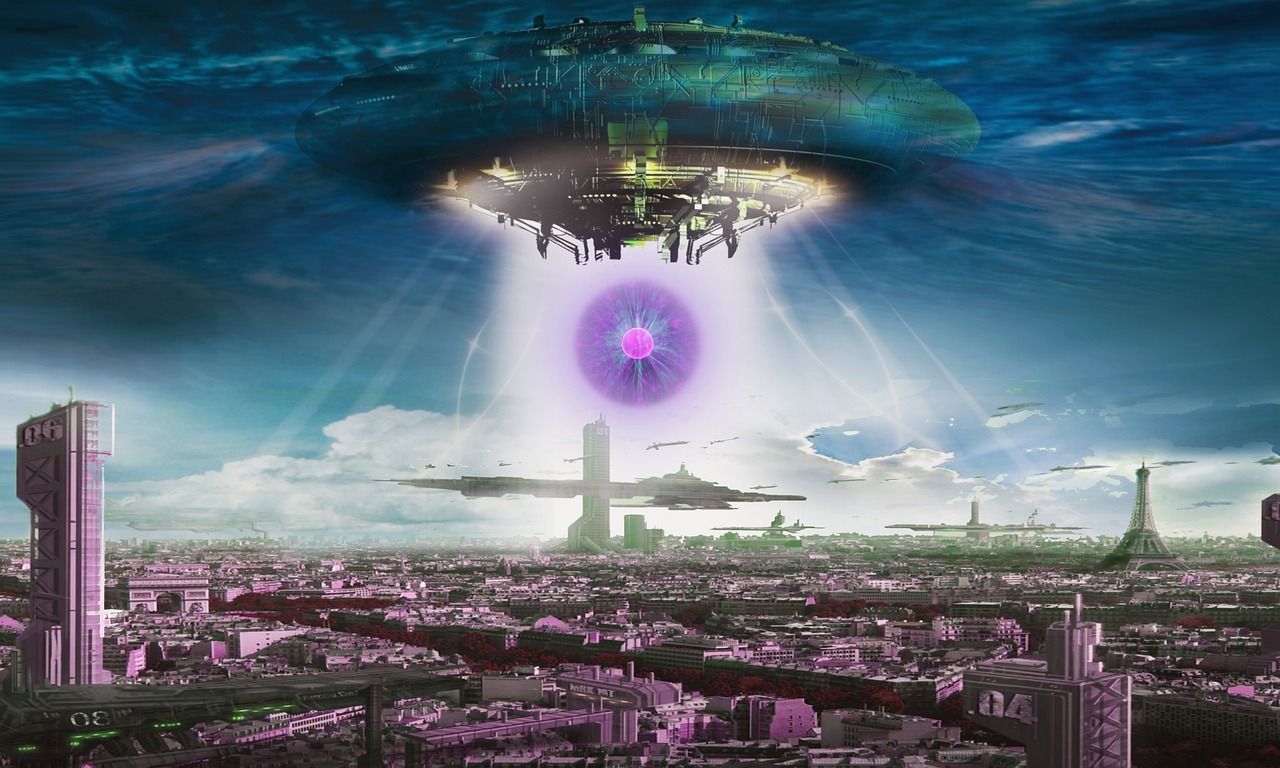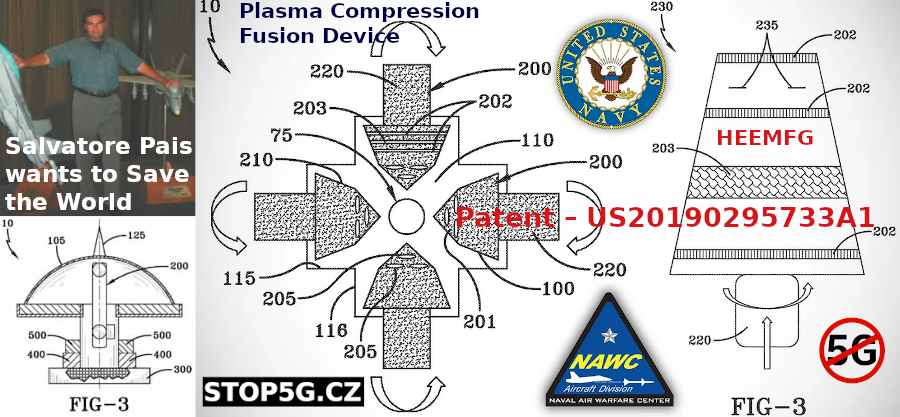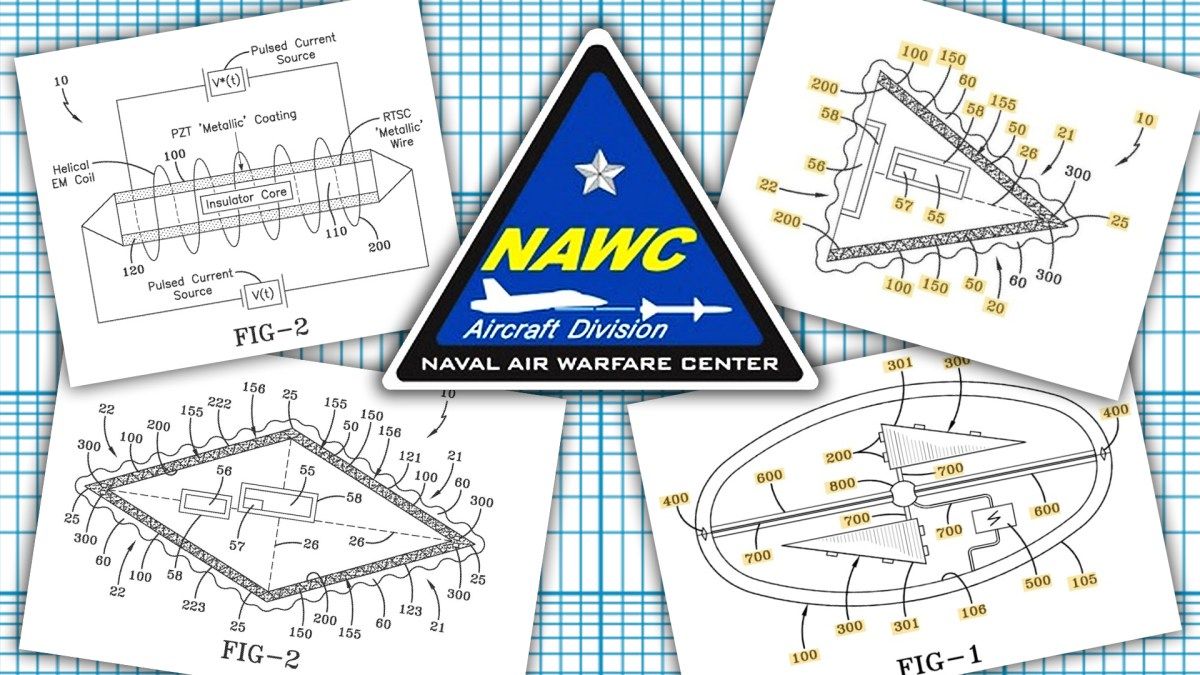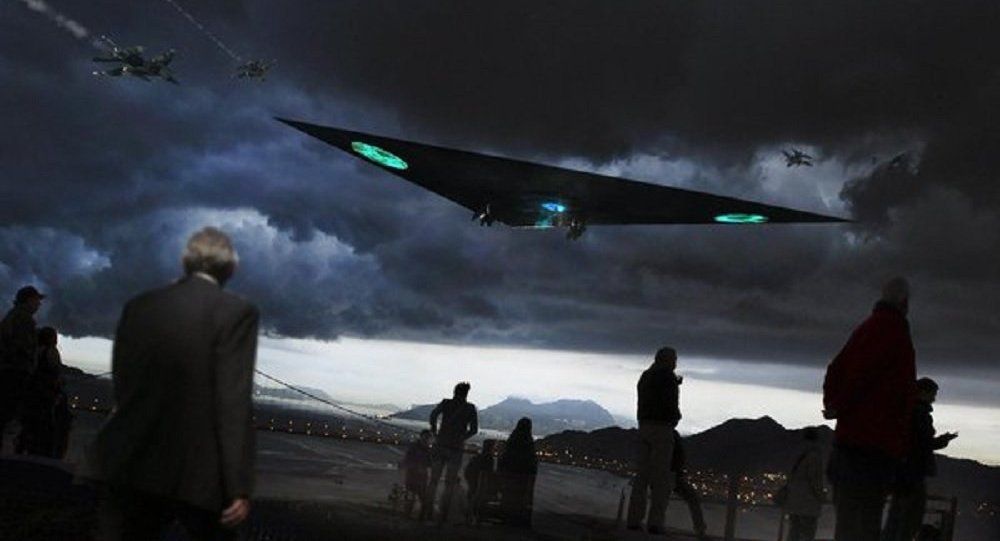Navy’s UFO-Type Patent Raises Questions
Article by Dave Makichuk February 3, 2021 (asiatimes.com)
• Brett Tingley at “The War Zone”/The Drive website has been leading the charge on analyzing and reporting on a series of next generation technology patents filed by the U.S. Navy in 2019, and invented by Navy aerospace engineer Dr. Salvatore Pais. These patents include a High Energy Electromagnetic Field Generator and Propulsion System and a Compact Plasma Compression Fusion Reactor. The technology claimed in these patents could revolutionize not only military aviation, but just about everything.
• Between October 2016 and September 2019, the US Navy’s Naval Air Warfare Center Aircraft Division spent $466,000 on testing Pais’ theories. In a reversal, they now say that that the “Pais Effect” could not be proven and the Navy will conduct no further research on it.
• According to a report by Alex Hollings in The National Interest, the Chief Technology Officer of the US Naval Aviation Enterprise, Dr. James Sheehy, has pointed out that China is investing significantly in this field of technology and that it “will become a reality” someday. Sheely told Patent Examiner Philip Bonzell that the United States “would prefer that we hold the patent as opposed to paying forever more to use this revolutionary technology”. And if the Pentagon had, in fact, produced a working model of an electromagnetic propulsion system and a compact fusion reactor, would they reveal it to the public or our military adversaries? At this point, it’s impossible to say whether or not the Navy and Dr. Pais have managed to produce anything truly groundbreaking.
• The patent for the High Energy Electromagnetic Field Generator resembles long-standing theories posited by UFO researchers about the means of propulsion employed by alien visitors. If functional, a HEEMFG could produce massive amounts of power with far reaching military and commercial implications. And The National Interest points out that an electromagnetic propulsion system could allow the Navy to build its own flying saucers.
• A compact, room temperature fusion reactor has long been the holy grail of energy scientists and researchers. While nuclear reactors in everything from power plants to aircraft carriers produce power by splitting a nucleus into two lighter nuclei (ie: splitting the atom), fusion power would involve fusing two or more nuclei together into a single, heavier element – most likely, hydrogen atoms being fused into a single helium one.
• Technically speaking, fusion reactors do already exist, but they’ve never been efficient enough to be used for power production. An efficient fusion reactor could effectively end humanity’s reliance on fossil fuels, or as a weapon end humanity as we know it. Documents released by The War Zone show that a compact fusion reactor could allow for the creation of a “Spacetime Modification Weapon” that would “make the hydrogen bomb seem more like a firecracker, in comparison.”
• As far as creating a super-weapon, we need not go any further than the ‘father of the hydrogen bomb’, physicist Edward Teller who decided to one-up the 10.4 megaton bomb that America detonated at Enewetak Atoll in 1952 by creating a 10,000-megaton nuclear weapon with the capability of destroying a small continent. To put a doomsday weapon like that in the hands of mankind would be pure madness, and, totally unnecessary. Thankfully, Teller’s plan was left on his infamous drawing board.
• Russia, China and the US already have enough nuclear firepower to destroy the world several times over. The largest nuclear weapon ever tested was the “Tsar Bomba” of the Soviet Union on October 30, 1961, with a yield estimated at 50-58 megatons.
• Salvatore Pais’ electromagnetic and fusion technologies wouldn’t be the first to be suppressed by the US government. In 1989, scientist Bob Lazar claimed to have worked on back-engineered UFO technology deep under Area 51 in Nevada. Lazar said that the UFOs’ propulsion was based on directing gravity waves generated by a powerful compact reactor.
• According to US Army Colonel Philip J. Corso, the US government has been extracting new technologies from from alien crashes, such as the infamous Roswell incident, since 1947. Any such technology is considered at least 50 years ahead of current aerospace technology and would be a tightly guarded secret by the US military, on the order of the Manhattan Project.

“If I had foreseen Hiroshima and Nagasaki, I would have torn up my formula in 1905.” – Albert Einstein

It has long been claimed by ufologists that the US government has been back-engineering UFOs at Area S4, the ultra secret site within Area 51.
In 1989, scientist Bob Lazar, who claimed to have worked at the base deep in the heart of the Nevada desert, spilled the beans on the study of UFOs — of which he claimed they had several.
The smaller saucer-like UFO he said he was studying, which was called the “sport model,” supposedly was based on directing gravity waves.
This came from a reactor which amplified the gravity waves which extended beyond the atom of Element 115, which he predicted to exist (he would be proved right years later).
 Whether any of that is true or not, it is interesting to note that in 2019, the US Navy’s Naval Air Warfare Center Aircraft Division (NAWCAD) filed a number of seemingly out of this world patents that could, in theory, revolutionize not only military aviation, but just about everything.
Whether any of that is true or not, it is interesting to note that in 2019, the US Navy’s Naval Air Warfare Center Aircraft Division (NAWCAD) filed a number of seemingly out of this world patents that could, in theory, revolutionize not only military aviation, but just about everything.
According to a report by Alex Hollings in The National Interest, chief among these strange new inventions is a High Energy Electromagnetic Field Generator (HEEMFG), which if functional, could produce massive amounts of power with far reaching military and commercial implications.
The patent also eerily resembles longstanding theories posited by UFO researchers about the means of propulsion seemingly employed by alien visitors.

Recently, Brett Tingley over at The War Zone received a fresh dump of documents pertaining to these patents through a Freedom

of Information Act request.
The Warzone has been leading the charge on analysis on these unusual patents ever since they surfaced two years ago, and are continuing the effort by pouring through hundreds of pages of reports, technical drawings, data, and photos released to them by the Navy.
Believe it or not, an electromagnetic propulsion system that could allow the Navy to build its own flying saucers may not be the craziest thing to come out of these efforts, National Interest reported.
According to these newly released documents, another branch of this work deals with the concept of a compact fusion reactor, which among other things, could allow for the creation of a “Spacetime Modification Weapon.”

Per the Navy’s own internal documents, this weapon could “make the hydrogen bomb seem more like a firecracker, in comparison.”

These patents were born out of the work of US Navy aerospace engineer Dr. Salvatore Pais, and as crazy as his inventions may sound, the Navy clearly seems to think they are worth exploration, National Interest reported.
So far, it’s been confirmed that the Navy has poured more than US$466,000 into helping this program mature since 2017.
Here’s how a Navy PowerPoint slide labeled “For Internal Use Only” explains the implications of Dr. Pais’ Spacetime Modification Weapon, of course: “Under uniquely defined conditions, the Plasma Compression Fusion Device can lead to development of a Spacetime Modification Weapon (SMW- a weapon that can make the Hydrogen bomb seem more like a firecracker, in comparison). Extremely high energy levels can be achieved with this invention, under pulsed ultrahigh current (I) / ultrahigh magnetic flux density (B) conditions (Z-pinch with a Fusion twist).“
So what exactly is this new technology?
A compact fusion reactor has long been the holy grail of energy scientists and researchers, and to be clear Pais isn’t the first person to suggest that he’s close to pulling it off, National Interest reported.
FAIR USE NOTICE: This page contains copyrighted material the use of which has not been specifically authorized by the copyright owner. ExoNews.org distributes this material for the purpose of news reporting, educational research, comment and criticism, constituting Fair Use under 17 U.S.C § 107. Please contact the Editor at ExoNews with any copyright issue.



 the U.S. Navy, The War Zone has just obtained a wide range of documents detailing experiments that the Naval Air Warfare Center Aircraft Division (NAWCAD) conducted to test the core concepts and technologies underlying his seemingly out of this world “UFO patents.” These same patents were vouched for by the head of the Navy’s aerospace research enterprise who cited Chinese advances in similar technologies as one of the reasons why the Navy was filing them.
the U.S. Navy, The War Zone has just obtained a wide range of documents detailing experiments that the Naval Air Warfare Center Aircraft Division (NAWCAD) conducted to test the core concepts and technologies underlying his seemingly out of this world “UFO patents.” These same patents were vouched for by the head of the Navy’s aerospace research enterprise who cited Chinese advances in similar technologies as one of the reasons why the Navy was filing them. name “The High Energy Electromagnetic Field Generator (HEEMFG),” contain hundreds of pages containing detailed technical drawings, photographs, and data related to actual tests of the HEEMFG. The system was meant to evaluate the feasibility of Dr. Salvatore Pais’s claimed “Pais Effect.” If you haven’t yet read about the ongoing saga of the enigmatic Dr. Pais and the science-fiction-like inventions he made on behalf of the Navy, be sure to get caught up on our previous reporting.
name “The High Energy Electromagnetic Field Generator (HEEMFG),” contain hundreds of pages containing detailed technical drawings, photographs, and data related to actual tests of the HEEMFG. The system was meant to evaluate the feasibility of Dr. Salvatore Pais’s claimed “Pais Effect.” If you haven’t yet read about the ongoing saga of the enigmatic Dr. Pais and the science-fiction-like inventions he made on behalf of the Navy, be sure to get caught up on our previous reporting. Each one of Dr. Pais’s inventions is stated to be enabled through what he himself described to The War Zone as “the Pais Effect,” a theoretical physics concept that is claimed to be enabled through the “controlled motion of electrically charged matter (from solid to plasma) via accelerated spin and/or accelerated vibration under rapid (yet smooth) acceleration-deceleration-acceleration transients.” This effect, the inventor claims, can lead to incredibly powerful electromagnetic energy fields that can “engineer the fabric of our reality at the most fundamental level” leading to incredible revolutions in power and propulsion, quantum communications, energy production, and even weaponry.
Each one of Dr. Pais’s inventions is stated to be enabled through what he himself described to The War Zone as “the Pais Effect,” a theoretical physics concept that is claimed to be enabled through the “controlled motion of electrically charged matter (from solid to plasma) via accelerated spin and/or accelerated vibration under rapid (yet smooth) acceleration-deceleration-acceleration transients.” This effect, the inventor claims, can lead to incredibly powerful electromagnetic energy fields that can “engineer the fabric of our reality at the most fundamental level” leading to incredible revolutions in power and propulsion, quantum communications, energy production, and even weaponry.
 The War Zone continues to dig into the bizarre U.S. Navy patents authored by enigmatic inventor Dr. Salvatore Pais and the seemingly unusual circumstances of their approval by the U.S. Patent and Trademark Office (USPTO). As part of our investigation, we recently
The War Zone continues to dig into the bizarre U.S. Navy patents authored by enigmatic inventor Dr. Salvatore Pais and the seemingly unusual circumstances of their approval by the U.S. Patent and Trademark Office (USPTO). As part of our investigation, we recently obtained a tranche of internal emails from Naval Air Systems Command, or NAVAIR, which appear to have been sent between Pais and personnel in different NAVAIR offices. While the Navy’s exotic energy production patents remain as mysterious as ever, these emails add to the backstory surrounding the inventions of Salvatore Pais and suggest that the patents went through a more rigorous internal evaluation process than was previously known. The emails also seem to indicate that the research program that emanated from the patents did in fact result in an experimental demonstration of some sort.
obtained a tranche of internal emails from Naval Air Systems Command, or NAVAIR, which appear to have been sent between Pais and personnel in different NAVAIR offices. While the Navy’s exotic energy production patents remain as mysterious as ever, these emails add to the backstory surrounding the inventions of Salvatore Pais and suggest that the patents went through a more rigorous internal evaluation process than was previously known. The emails also seem to indicate that the research program that emanated from the patents did in fact result in an experimental demonstration of some sort.



